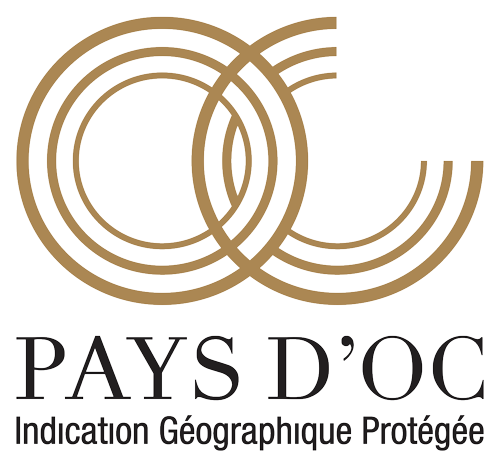Pays d’Oc wines: A 30-year conquest at the core of an ancient wine region
Pays d'Oc wines: A 30-year conquest at the core of an ancient wine region
IGP Pays d’Oc wines capture the zeitgeist of the current wine scene and are now celebrating their thirty-year conquest at the core of France’s oldest wine region, founded in the 6th century BC. Taking the concept of varietal wines as their focal point, they emerged in 1987 and have become the standard-bearers of the sun-drenched South of France and its now renowned wines, nationally and overseas.
In the footsteps of the Romans – the veterans of winegrowing
Although the Greeks established the first vineyards in Languedoc-Roussillon in the 6th century BC, Gaul’s oldest known wine region actually emerged under the Romans, with the Roman colony of Narbonne founded in 118 BC at its heart. Under the Emperor Augustus, veterans of the Roman legions, often sons of winegrowers in Campania, were given land as a token of thanks for their many years of service. They established the first wine properties, or villae, and wine production spread across the Empire thanks to the Via Domitia or Domitian Way.
The first Roman road in Gaul, it connected Italy with Spain, spanning over 200 km in Languedoc and the entire length of the Pays d’Oc wine region, from Beaucaire to Le Perthus on the Pyrenean border. Even today, the Domitian Way has left its stamp on the landscapes and laid the foundation stone for the Pays d’Oc wine region’s identity.
The Middle Ages – the Cistercian monks and the invention of ‘terroir’
After the fall of the Roman Empire and five centuries of barbaric invasions, the Cistercians and Benedictine monks saved the vineyards when they came to Languedoc. With pinpoint precision, they mapped out the finest plots and planted vines there. The monks strove to produce good wine because it brought honour to their order and established the reputation of their abbeys and abbots, who were themselves known as ‘Pater Vinearum’ or the ‘Father of Vines’.
The concept of terroir emerged through the abbeys that were built along the routes to Santiago de Compostela, which pilgrims followed to Galicia. The region became home to a great number of abbeys, which served as proper research laboratories for the monks, allowing them to discover winemaking processes that are still in use today.
From the Ancien Régime to the 19th century
- -The Renaissance period once again opened up major maritime markets. Small ports across the region, including Lattes, Mèze, Agde and Collioure outfitted boats so that the region’s wines could be exported.
- Over these centuries, wines from Languedoc-Roussillon held pride of place on tables all and sundry, including those of the Kings of France. In December 1564, King Charles IX and his mother Catherine de’ Medici developed a soft spot for Muscat de Frontignan during a trip to Languedoc.
- In 1681, the official opening of the Canal du Midi, designed by Pierre-Paul Riquet to connect the Mediterranean with the Atlantic, opened up a significant export window for Languedoc and Roussillon wines in Northern Europe.
- At the end of the 18th century, Thomas Jefferson, the then United States Ambassador to France, fell under the charm of wines from Saint-Georges d’Orques on the outskirts of Montpellier, on a trip to Languedoc. When he became US President, he even went so far as to exempt Languedoc wines from taxes so as to promote exports.
- In 1855, the arrival of the railway brought unprecedented wealth to the region. The boom however was cut short by the devastation caused by phylloxera. After being rapidly replanted, the region’s vineyards would experience significant growth up until the 1950s.
The 1970s – Languedoc’s quality revolution
In the mid-1970s, regional output reached a high point with 30 million hectolitres of wine generating 10 billion francs, or 1.5 billion euros, in revenue. At that time, Languedoc-Roussillon’s vineyards stretched over 430,000 hectares but its high-cropping vines – covering 75% of the region – no longer produced wines the market demanded. As the global market opened up and brought with it high standards, wine growers would be forced to restructure their vineyards and put quality first.
By repositioning their wines from a quality standpoint over a thirty-year period, Languedoc and Roussillon promoted the emergence of geographic pedigrees with the birth of appellations of origin (now AOPs or PDOs), then IGPs.
1987 – the official inception of IGP Pays d’Oc
Determined to produce wines that would meet international demand, the winegrowers who blazed the trail of IGP Pays d’Oc chose to focus on varietal wines, from the outset in 1987, so that they could gain a foothold in the global market.
The extensive aromatic spectrum they chose – which has proven pivotal to the success of an endorsement now authorising 58 grape varieties – stemmed from a sea-change in the vineyard make-up which at the time was ground-breaking. As varietal statements are now a key consumer cue at international level, Pays d’Oc wines successfully established a place for themselves in this new market. After being labelled Vins de Pays for 22 years, they became IGP Pays d’Oc on August 1, 2009, and are now accountable to the National Institute for Quality and Origin (INAO), alongside appellation wines.
Although the Greeks established the first vineyards in Languedoc-Roussillon in the 6th century BC, Gaul’s oldest known wine region actually emerged under the Romans, with the Roman colony of Narbonne founded in 118 BC at its heart. Under the Emperor Augustus, veterans of the Roman legions, often sons of winegrowers in Campania, were given land as a token of thanks for their many years of service. They established the first wine properties, or villae, and wine production spread across the Empire thanks to the Via Domitia or Domitian Way.
The first Roman road in Gaul, it connected Italy with Spain, spanning over 200 km in Languedoc and the entire length of the Pays d’Oc wine region, from Beaucaire to Le Perthus on the Pyrenean border. Even today, the Domitian Way has left its stamp on the landscapes and laid the foundation stone for the Pays d’Oc wine region’s identity.
After the fall of the Roman Empire and five centuries of barbaric invasions, the Cistercians and Benedictine monks saved the vineyards when they came to Languedoc. With pinpoint precision, they mapped out the finest plots and planted vines there. The monks strove to produce good wine because it brought honour to their order and established the reputation of their abbeys and abbots, who were themselves known as ‘Pater Vinearum’ or the ‘Father of Vines’.
The concept of terroir emerged through the abbeys that were built along the routes to Santiago de Compostela, which pilgrims followed to Galicia. The region became home to a great number of abbeys, which served as proper research laboratories for the monks, allowing them to discover winemaking processes that are still in use today.
- -The Renaissance period once again opened up major maritime markets. Small ports across the region, including Lattes, Mèze, Agde and Collioure outfitted boats so that the region’s wines could be exported.
- Over these centuries, wines from Languedoc-Roussillon held pride of place on tables all and sundry, including those of the Kings of France. In December 1564, King Charles IX and his mother Catherine de’ Medici developed a soft spot for Muscat de Frontignan during a trip to Languedoc.
- In 1681, the official opening of the Canal du Midi, designed by Pierre-Paul Riquet to connect the Mediterranean with the Atlantic, opened up a significant export window for Languedoc and Roussillon wines in Northern Europe.
- At the end of the 18th century, Thomas Jefferson, the then United States Ambassador to France, fell under the charm of wines from Saint-Georges d’Orques on the outskirts of Montpellier, on a trip to Languedoc. When he became US President, he even went so far as to exempt Languedoc wines from taxes so as to promote exports.
- In 1855, the arrival of the railway brought unprecedented wealth to the region. The boom however was cut short by the devastation caused by phylloxera. After being rapidly replanted, the region’s vineyards would experience significant growth up until the 1950s.
In the mid-1970s, regional output reached a high point with 30 million hectolitres of wine generating 10 billion francs, or 1.5 billion euros, in revenue. At that time, Languedoc-Roussillon’s vineyards stretched over 430,000 hectares but its high-cropping vines – covering 75% of the region – no longer produced wines the market demanded. As the global market opened up and brought with it high standards, wine growers would be forced to restructure their vineyards and put quality first.
By repositioning their wines from a quality standpoint over a thirty-year period, Languedoc and Roussillon promoted the emergence of geographic pedigrees with the birth of appellations of origin (now AOPs or PDOs), then IGPs.
Determined to produce wines that would meet international demand, the winegrowers who blazed the trail of IGP Pays d’Oc chose to focus on varietal wines, from the outset in 1987, so that they could gain a foothold in the global market.
The extensive aromatic spectrum they chose – which has proven pivotal to the success of an endorsement now authorising 58 grape varieties – stemmed from a sea-change in the vineyard make-up which at the time was ground-breaking. As varietal statements are now a key consumer cue at international level, Pays d’Oc wines successfully established a place for themselves in this new market. After being labelled Vins de Pays for 22 years, they became IGP Pays d’Oc on August 1, 2009, and are now accountable to the National Institute for Quality and Origin (INAO), alongside appellation wines.


